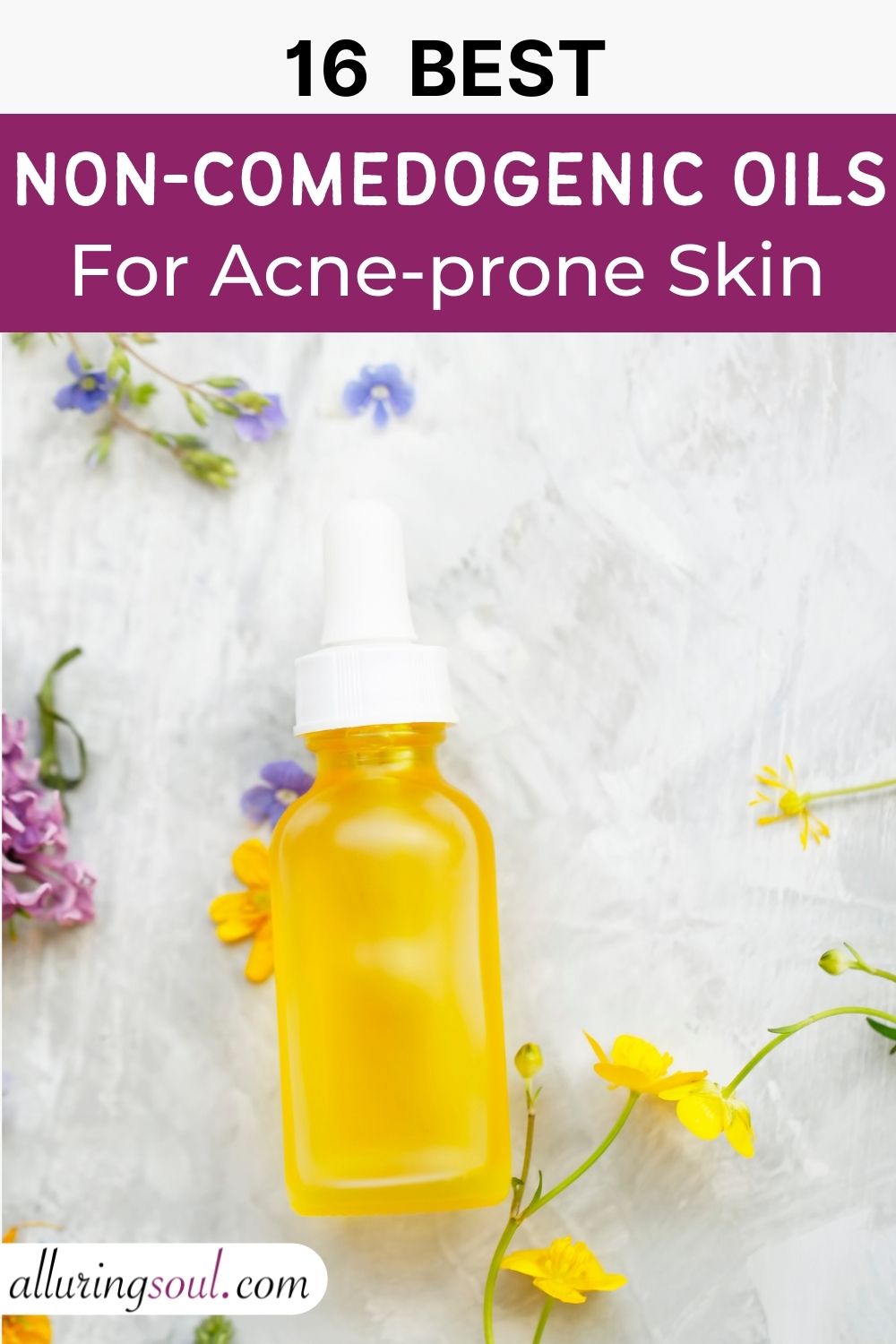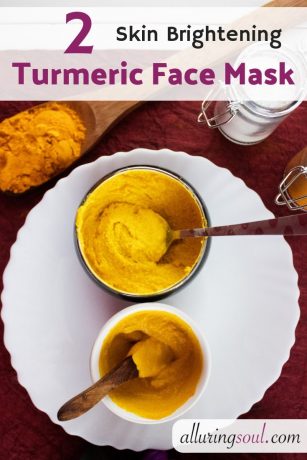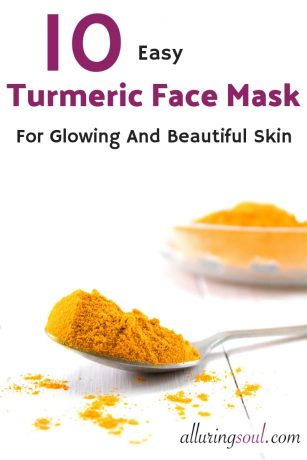Facial oils are the latest buzz in skincare. Infused with the goodness of natural ingredients, facial oils offer innumerable benefits. Although all facial oils offer some form of benefits, non-comedogenic oils are the most popular.
Oils that are non-comedogenic do not clog the pores on the skin. This is helpful for acne-prone skin, as it does not allow the build-up of dead skin cells, dirt, sebum, and bacteria. Generally, oils that are high in linoleic acid are non-comedogenic in nature. Linoleic acid is lightweight and gets absorbed in the skin easily.
What Does Non-Comedogenic And Comedogenic Mean?
The comedogenicity factor examines whether oil will clog the pores of the skin or not.
Non-comedogenic oils are those that do not clog the pores of the skin, and hence do not cause acne. On the other hand, comedogenic oils have a tendency to accumulate in the skin pores block the skin pores. Non-comedogenic oils are suitable for those with oily or combination skin that is prone to acne.
However, comedogenicity is not the ultimate measure to predict whether our skin will have breakouts or not. Several other factors, such as diet and hormonal changes determine the texture of our skin.
What Is a Comedogenic Scale?
The comedogenic scale is based on an oil’s ability to clog the pores when applied to the skin. A low comedogenic rating means that the product will not clog the skin pores, whereas a high rating means that the oil will likely clog the facial pores.
A detailed description of the comedogenic scale is as follows:
0 – Not Likely to Clog Pores
1 – Low
2 – Moderately Low
3 – Moderate
4 – Fairly High
5 – Very High to Clog Pores
According to this scale, oils with a comedogenic rating of 0-2 are classified as non-comedogenic oils.
Example – Rosehip oil has a comedogenic rating of 1 and it does not clog pores and can be used on acne-prone skin whereas coconut oil has a comedogenic rating of 4 and it has a very high chance to clog the pores.
The Fatty Acids Of Oil
Knowing how to distinguish a non-comedogenic oil from a comedogenic one is important. Essentially, the difference lies in the composition of the oils.
Generally, all facial oils contain a combination of essential fatty acids. Essential fatty acids are those that our body does not produce. The two main fatty acids and their benefits are as follows:
1. Linoleic Acid
Linoleic acid is an omega-6 fatty acid. Due to its lightweight and fast-absorbing nature, the high percentage of linoleic acid makes oils non-comedogenic.
It is found that people with acne-prone skin lack an adequate amount of omega-6 fatty acids in their skin. Thus replenishing the linoleic acid content in the skin can help reduce the frequency of breakouts.
Linoleic acid has the ability to restore barriers and prevent aging. People with oily skin can use oils with high linoleic acid to moisturize their skin without increasing build-up.
The list Of high linoleic acid oils are:
- Grapeseed oil ( linoleic acid – 72%)
- Sunflower oil ( linoleic acid – 73%)
- Safflower oil (linoleic acid – 78%)
- Hemp Seed Oil (linoleic acid – 57%)
- Watermelon Seed oil ( linoleic acid – 65%)
- Passionfruit Seed oil (linoleic acid – 73%)
- Borage seed oil (linoleic acid – 36%)
- Black currant seed oil (linoleic acid – 47%)
- Cranberry seed oil (linoleic acid – 40%)
- Rosehip seed oil (linoleic acid – 55%)
- Walnut Seed Oil (linoleic acid – 51%)
- Rice Bran Oil (linoleic acid – 39%)
- Evening Primrose Oil (linoleic acid – 74%)
2. Oleic Acid
Oleic acid is an omega-9 fatty acid. Generally found in oils that are thicker in consistency, oleic acid is beneficial for those with dry skin. Oleic acid can penetrate the layers of skin and soothe skin inflammation. People with inflammatory skin concerns like eczema and rosacea can incorporate comedogenic oils that have high oleic acid content.
The list Of oils that have high oleic acid are:
- Avocado oil (oleic acid – 80%)
- Apricot Kernel oil (oleic acid – 78%)
- Hazelnut oil (oleic acid – 85%)
- Macadamia nut oil (oleic acid – 58%)
- Olive oil (oleic acid – 80%)
- Sweet Almond oil (oleic acid – 78%)
- Camellia Seed oil (oleic acid – 84%)
- Shea Butter (oleic acid – 45%)
- Cocoa Butter (oleic acid – 34%)
However, not all oils that are rich in oleic acid are comedogenic. For example, camellia seed oil has a high oleic acid content, but has a comedogenic rating of 1, making it a non-comedogenic oil.
List Of Best Non-Comedogenic Oils For Acne-prone Skin
1. Argan Oil
- Comedogenic rating: 0
- Best for skin types: All Skin Types
- Linoleic Acid: 43%
- Oleic Acid: 37%
Being extremely light and easy absorbing, argan oil is used for both skin and hair. It does not clog pores and controls sebum production. The anti-oxidants in Argan oil have the ability to decrease this overproduction of oil by balancing sebum levels.
Argan oil is full of antioxidants and fatty acids which help repair skin and remove wrinkles. It is rich in vitamin A, C, and E which exfoliates dead cells and regenerates faster new cells. Besides preventing breakouts, vitamin E in argan oil acts as an antioxidant and helps fade blemishes. Argan oil is also used to smoothen frizzy hair and protect from heat damage.
2. Hemp seed oil
- Comedogenic rating: 0
- Best for skin types: All Skin Types, especially oily and acne-prone skin
- Linoleic Acid: 56%
- Oleic Acid: 11%
Hemp seed is another non-comedogenic oil that has excellent moisturizing properties. People with oily skin can use it to keep their skin plump and moist, without threatening breakouts. It also soothes skin irritation and redness that affects people suffering from eczema and psoriasis. It plumps the look of your skin, firms and tightens your skin’s appearance, and provides powerful antioxidant activity to help promote beautiful skin.
3. Safflower oil
- Comedogenic rating: 0
- Best for skin types: All Skin Types
- Linoleic Acid: (70-80%)
- Oleic Acid: (10-20%)
As it is a lightweight, non-comedogenic oil, it can moisturize the skin well without being greasy. Safflower oil is used as an oil cleanser as it can clear the dirt, oil, and impurities from the pores without clogging the skin. It also facilitates the regeneration of new skin cells, helping in fading scars. It contains lubricant properties that prompt the skin to retain water and moisture.
4. Camellia Seed Oil
- Comedogenic rating: 1
- Best for skin types: All Skin Types
- Linoleic Acid: 7%
- Oleic Acid: 79%
Despite having a high content of oleic acid, the camellia seed oil is non-comedogenic. People with dry skin as well as oily skin can use it as a moisturizer because it does not clog pores and also helps to exfoliate dead skin cells.
Camellia seed oil has excellent anti-inflammatory properties and is used as an effective spot treatment for acne. It is also used to reduce the appearance of wrinkles and lines on the skin.
5. Castor oil
- Comedogenic rating: 1
- Best for skin types: All Skin Types
- Linoleic Acid: 4%
- Oleic Acid: 4%
- Ricinoleic Acid: 90%
Due to the high content of ricinoleic acid, castor oil has a drying effect on the skin. People with acne-prone skin can use castor oil as it detoxifies the skin and improves cell regeneration.
Castor oil has a heavy consistency and should always be diluted before use. It also has antifungal and analgesic properties.
6. Rice Bran Oil
- Comedogenic rating: 2
- Best for skin types: All Skin Types, especially combination skin
- Linoleic Acid: 34%
- Oleic Acid: 38%
- Palmitic Acid: 21.5%
Rice bran oil is especially useful for sensitive and combination skin. It is rich in essential fatty acids and vitamin E that helps to moisturize skin and promote skin cell regeneration. It helps to lighten wrinkles and makes skin soft and smooth. It absorbs quickly into the skin and has a non-greasy feeling on the skin.
7. Jojoba oil
- Comedogenic rating: 2
- Best for skin types: All Skin Types especially oily skin
- Linoleic Acid: 5%
- Oleic Acid: (5-15%)
- Eicosenoic Acid: 60%
Jojoba oil’s composition is similar to the natural sebum produced by our skin. This way, jojoba oil can control sebum production, and prevent breakouts. It has anti-inflammatory effects and can be used on a variety of skin conditions including skin infections, skin aging, as well as wound healing.
Jojoba oil also acts as an excellent moisturizer and can reinforce the skin barrier by improving cell turnover.
8. Grapeseed oil
- Comedogenic rating: 2
- Best for skin types: All Skin Types
- Linoleic Acid: 40%
- Oleic Acid: 25%
Grapeseed oil is extremely light and gets absorbed in the skin without clogging pores. It is rich in vitamin E and can protect the skin from oxidants, free radicals, and dust particles. It also heals redness, scars, and inflamed skin.
Grapeseed oil has antibacterial and anti-inflammatory properties that prevent acne and it is rich in antioxidants like vitamin E and C which help to improve skin elasticity and keep skin moisturized.
9. Rosehip oil
- Comedogenic rating: 1
- Best for skin types: All Skin Types
- Linoleic Acid: 44%
- Oleic Acid: 14%
Rosehip is a multipurpose non-comedogenic oil. It can reduce hyperpigmentation and prevent breakouts. Additionally, due to the presence of antioxidants, rosehip oil can fight free radicals. It also has a moisturizing effect on the skin.
10. Sunflower oil
- Comedogenic rating: 0-2
- Best for skin types: All Skin Types
- Linoleic Acid: 58%
- Oleic Acid: 30%
Sunflower oil has good moisturizing and hydrating properties. It can also reduce scarring and acne spots. Besides, Sunflower oil can also reduce signs of aging. It has a high content of vitamin E which helps to promote skin cell regeneration and moisturizes the skin deeply.
11. Sweet almond oil
- Comedogenic rating: 2
- Best for skin types: All Skin Types
- Linoleic Acid: (20-30%)
- Oleic Acid: (62-86%)
Sweet almond oil is a good emollient. It can hydrate and moisturize all skin types but is useful for dry skin. It can heal damaged and scarred skin by increasing the rate of cell turnover due to the high content of Vitamin E and antioxidants.
12. Neem oil
- Comedogenic rating: 1-2
- Best for skin types: Dry, acne-prone skin
- Linoleic Acid: 13%
- Oleic Acid: 50%
Although neem oil has a slightly pungent odor, it is useful for reducing inflammation. Neem oil has antibacterial, anti-inflammatory, and antifungal properties which can fight redness, irritation and keep the skin free from acne-causing bacteria. Neem oil is also helpful in treating skin conditions like eczema and psoriasis.
13. Olive oil
- Comedogenic rating: 2
- Best for skin types: Dry, acne-prone skin
- Linoleic Acid: (5-15%)
- Oleic Acid: (60-80%)
Olive oil is one of the most potential moisturizers available among all other oils. It contains squalene, a lipid that is produced by our body to hydrate our skin. Besides, olive oil can reduce wrinkles, and smoothen the skin texture.
14. Calendula oil
- Comedogenic rating: 1
- Best for skin types: Dry sensitive skin
- Calendric Acid: 60%
Calendula oil has good moisturizing and healing properties. It reduces signs of aging and heals scars by encouraging cell renewal. Calendula oil is known to have antioxidant properties that promote the growth of healthy skin cells by increasing cell turnover.
Calendula has anti-inflammatory and makes your skin softer and plumper while reducing the appearance of fine lines and wrinkles.
15. Squalane Oil
- Comedogenic rating: 0-1
- Best for skin types: All Skin Types
Squalane is actually a hydrogenated and stable form of squalene, a lipid produced by our skin. Squalane is also found in sugarcane and olives. Squalane oil moisturizes and hydrates the skin without clogging pores. It is also used in oil cleansers.
16. Tamanu Oil
- Comedogenic rating: 2
- Best for skin types: All Skin Types
- Linoleic Acid: (29-38%)
- Oleic Acid: (34-41%)
Tamanu oil is the best remedy against hyperpigmentation. Due to its thick consistency and pungent smell, it is used mostly as a spot treatment. Tamanu oil can reduce the appearance of scars, fade scar marks and lighten the skin of the acne-prone area.





No Comments